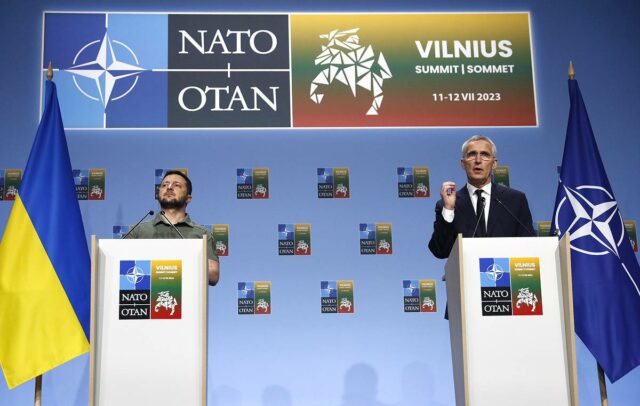
Moscow’s Mixed Signals About Its Strategic Intent in the Black Sea
Publication: Eurasia Daily Monitor Volume: 20 Issue: 128
By:

On August 5, the Ukrainian Ministry of Defense declared that all ships traveling to Russia’s Black Sea ports or the Russian-occupied territories will be considered “military carriers.” Specifically, this designation includes the Russian ports of Anapa, Novorossiysk, Gelendzhik, Tuapse, Sochi and Taman (Epravda.com.ua, August 5). This followed Russian attempts to block cargo ships from accessing Ukraine’s Black Sea ports by threatening to treat them as legitimate military targets, as well as Russian strikes on port infrastructure in Odesa (TASS, July 19).
In response to Russia’s provocations, the West provided a restrained yet substantial reaction. On July 22, Ukrainian President Volodymyr Zelensky requested to convene the NATO-Ukraine Council after Moscow threatened civilian ships and conducted increased missile attacks on Ukraine’s ports as part of its intentions to enforce a de facto blockade (Kyiv Independent, July 22; see EDM, July 26). One of the bombed targets—the Port of Reni on the Danube River—is situated right next to the border of Romania, a NATO member. On July 26, the NATO-Ukraine Council was summoned, announcing that the alliance would step up its surveillance and reconnaissance in the Black Sea region to include maritime patrol aircraft and drones (Nato.int, July 26).
Subsequently, on July 30, three cargo ships—carrying Israeli, Greek and mixed Turkish-Georgian registrations, respectively—traveled toward the Ukrainian Port of Izmail on the Danube. Their movements were reportedly monitored by NATO aircraft surveilling the area (Ukrainska Pravda, August 1). These ships were neither stopped nor attacked by the Russian Navy, which would suggest the Kremlin’s hesitation to follow up on its earlier threats. In hoping to claim some legitimacy and justification for its actions—by invoking that the ships were transporting military cargo—Russia could have made a move as the ships traveled toward Ukraine.
Overall, there seems to be some regularity to Moscow’s latest moves in the Black Sea. Russia has shown aggressive behavior toward softer targets that would trigger reduced risks for itself but exercised restraint otherwise. Moreover, the Kremlin is apparently becoming more hesitant to trigger incidents that would force NATO to step up actions that could further benefit Ukraine’s military operations in the region. For example, on June 26, the Russian Ministry of Defense reported that it deployed two Su-27 fighter jets to intercept three British Royal Air Force aircraft—an RC-135 reconnaissance aircraft, which was escorted by two Typhoon fighter jets—that were reportedly moving toward the “state border” of Russia in the Black Sea area (Eng.mil.ru, June 26). A Russian Defense Ministry press release stated that the British aircraft made a U-turn after facing the Russian fighter jets, stressing that the Russian side operated in line with international provisions and that it “avoided flying in dangerous proximity” of the British aircraft. Indeed, the soft language of this report stands in stark contrast to Russia’s antagonistic messages after earlier similar incidents.
The report also strays from the Russian military’s escalatory and aggressive behavior in the Black Sea region. In May 2023, a Russian Su-35 fighter jet engaged in “aggressive and dangerous maneuvers,” making three approaches toward a Polish L-410 Turbolet civilian aircraft, resulting in the crew losing control of the plane (TVP World, May 7). The Polish aircraft was operating as part of a European Union Frontex border agency mission, patrolling international airspace over the Black Sea some 60 kilometers east of Romania’s borders. These dangerous actions were picked up by the NATO Enhanced Air Policing Mission in Romania, which put two Romanian and two Spanish jets on “pre-alert” (Defenseromania.ro, May 6). Prior to this, a Russian Su-27 jet deliberately provoked the downing of a US Air Force MQ-9 Reaper drone in international airspace over the Black Sea in March (Defenseromania.ro, March 16).
Moscow’s aggressive behavior is consistent with the ideas advanced by a segment of the Russian military expert community—namely, that Russia must increase its predominant control over the Black Sea (Expert.ru, January 22). The intended objectives include severely undermining Ukraine’s economic potential while increasing its own by controlling Black Sea ports and commercial routes. Another major, though connected, objective according to these Russian experts is increasing Russia’s ability to pressure Romania and Bulgaria while acquiring more bargaining leverage vis-à-vis Turkey through the use of both direct and indirect military threats.
The Kremlin aims to achieve this by denying non-riparian states from operating in the Black Sea, avoiding the “internationalization” of the areas near Crimea and maintaining Russia’s sovereignty over these sections. The listed incidents where Russia displayed aggressive behavior were aimed toward these goals—using the logic of mixed deterrence by denial and punishment to probe Western fears of military escalation with Russia.
An important lesson to consider is that Russia itself is even more apprehensive about escalating tensions with NATO, given Moscow’s ongoing war against Ukraine. Russia is hesitant that this could further increase NATO aid for Ukraine’s war efforts, especially in the Black Sea. Therefore, the Kremlin’s actions should be interpreted as its engagement in what it sees as a confrontation of resolve with the West, in particular the United States. In answering this call, NATO can deny Russia’s strategic objectives in the Black Sea, making its efforts to increase control over the area too costly and decreasing the probability of Russian success.



